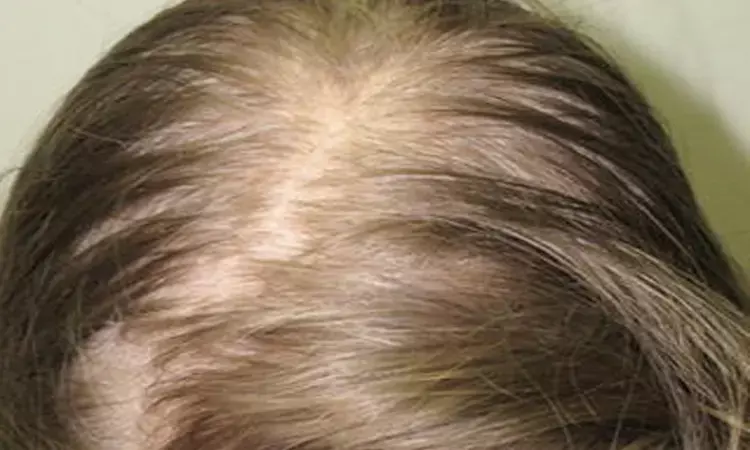- Home
- Medical news & Guidelines
- Anesthesiology
- Cardiology and CTVS
- Critical Care
- Dentistry
- Dermatology
- Diabetes and Endocrinology
- ENT
- Gastroenterology
- Medicine
- Nephrology
- Neurology
- Obstretics-Gynaecology
- Oncology
- Ophthalmology
- Orthopaedics
- Pediatrics-Neonatology
- Psychiatry
- Pulmonology
- Radiology
- Surgery
- Urology
- Laboratory Medicine
- Diet
- Nursing
- Paramedical
- Physiotherapy
- Health news
- Fact Check
- Bone Health Fact Check
- Brain Health Fact Check
- Cancer Related Fact Check
- Child Care Fact Check
- Dental and oral health fact check
- Diabetes and metabolic health fact check
- Diet and Nutrition Fact Check
- Eye and ENT Care Fact Check
- Fitness fact check
- Gut health fact check
- Heart health fact check
- Kidney health fact check
- Medical education fact check
- Men's health fact check
- Respiratory fact check
- Skin and hair care fact check
- Vaccine and Immunization fact check
- Women's health fact check
- AYUSH
- State News
- Andaman and Nicobar Islands
- Andhra Pradesh
- Arunachal Pradesh
- Assam
- Bihar
- Chandigarh
- Chattisgarh
- Dadra and Nagar Haveli
- Daman and Diu
- Delhi
- Goa
- Gujarat
- Haryana
- Himachal Pradesh
- Jammu & Kashmir
- Jharkhand
- Karnataka
- Kerala
- Ladakh
- Lakshadweep
- Madhya Pradesh
- Maharashtra
- Manipur
- Meghalaya
- Mizoram
- Nagaland
- Odisha
- Puducherry
- Punjab
- Rajasthan
- Sikkim
- Tamil Nadu
- Telangana
- Tripura
- Uttar Pradesh
- Uttrakhand
- West Bengal
- Medical Education
- Industry
Oral spironolactone safe and effective treatment for androgenic alopecia: Study

USA: Oral spironolactone, both as monotherapy and in combination with topical minoxidil, is a safe and effective treatment for women with androgenetic alopecia (AGA), shows a recent review in the Journal of the American Academy of Dermatology.
Androgenic alopecia is a psychologically taxing dermatologic condition that is estimated to affect about 50% of women by the age of 50. Currently, topical minoxidil and oral finasteride are the only medications approved by the United States Food and Drug Administration (FDA) in the treatment of hair loss. Considering this, it becomes important to examine additional therapeutic agents. Spironolactone, although, not currently approved by FDA for dermatologic conditions has been proposed as a potential treatment agent for AGA. This is because of its ability to decrease circulating androgens and counteract androgen effects on hair follicles.
Against the above backdrop, Crystal Aguh, Department of Dermatology, Johns Hopkins School of Medicine, Baltimore, Maryland, and colleagues aimed to establish the efficacy and safety of spironolactone for the treatment of AGA in women in the review.
For this purpose, the researchers conducted a systematic search of online databases using the search terms "spironolactone" and "alopecia. A total of 12 studies with 286 participants were included in the study.
In 67 (23.4%) of the 286 patients, spironolactone was used as monotherapy across all studies and was used in combination with topical minoxidil, oral minoxidil, low-level laser therapy, or iron supplementation in the remaining study participants. Patients were treated with spironolactone at doses ranging between 25 mg and 200 mg for a duration of 6 months to 4 years.
Following were the study's key findings:
- Although topical minoxidil was the most common agent used in combination with spironolactone, the study reported full integer improvement in Sinclair hair loss severity scale score in women with a baseline Sinclair score of 2.5 or higher on spironolactone independent of concurrent therapies used.
- When employed as a monotherapy, 33 (49.3%) of the 67 patients achieved improvement in follicular density and hair loss on spironolactone.
- Notably, spironolactone was largely ineffective in studies where the dosage was maintained below 100 mg. Instead, significant improvement was reported after at least 12 months of use at 100 mg to 200 mg daily.
- The most commonly reported adverse effect was lightheadedness or dizziness.
- More severe side effects described in the literature were hypotension, hyperkalemia, and urticarial allergic reaction; however, these affected less than 2% of participants across all studies.
"Oral spironolactone was generally recommended in nonpregnant women older than 18 years of age at an initial dose of 50 mg daily titrated up to a therapeutic range of 100 mg to 200 mg daily taken for at least 6 months to 1 year to achieve optimal results," wrote the authors.
"This review found that oral spironolactone when used in combination with topical minoxidil and, importantly, as a monotherapy, is an effective, well-tolerated treatment for women with AGA," they concluded.
Reference:
The study titled, "Efficacy and safety profile of oral spironolactone use for androgenic alopecia: A systematic review," is published in the Journal of the American Academy of Dermatology.
Dr Kamal Kant Kohli-MBBS, DTCD- a chest specialist with more than 30 years of practice and a flair for writing clinical articles, Dr Kamal Kant Kohli joined Medical Dialogues as a Chief Editor of Medical News. Besides writing articles, as an editor, he proofreads and verifies all the medical content published on Medical Dialogues including those coming from journals, studies,medical conferences,guidelines etc. Email: drkohli@medicaldialogues.in. Contact no. 011-43720751


